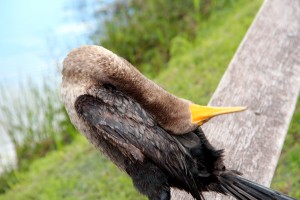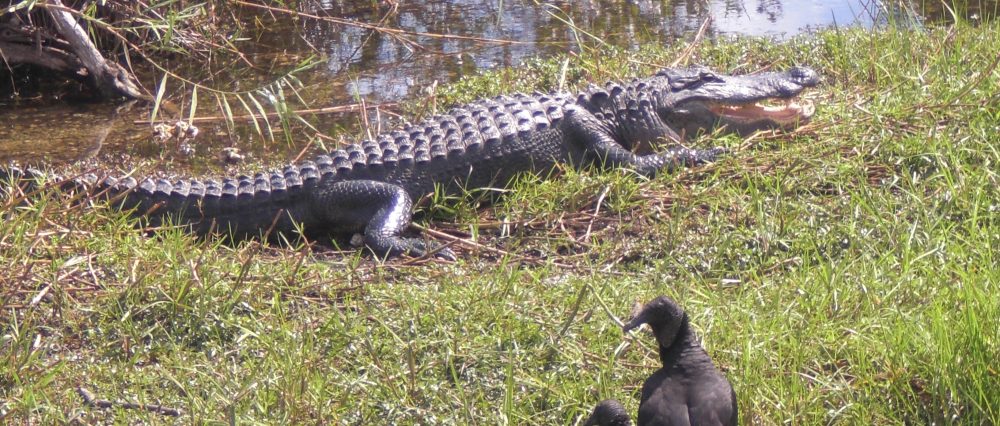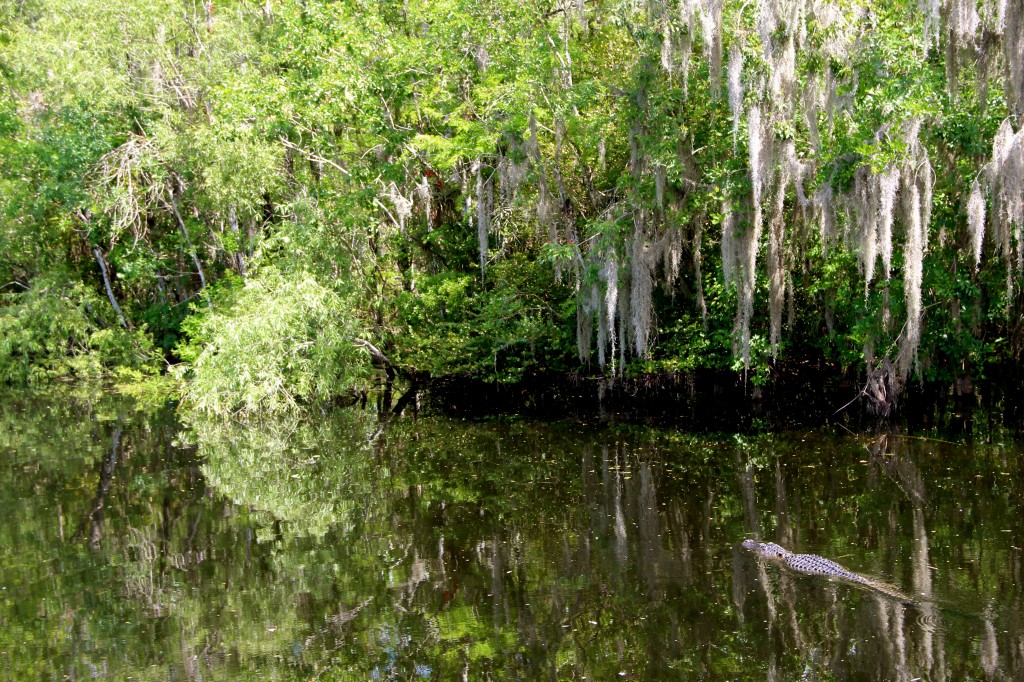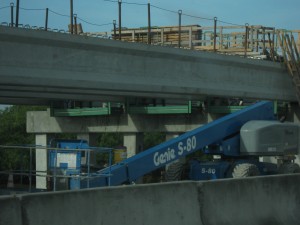Hope flickers for the unique and beautiful, but damaged, Florida Everglades
By Gwendolyn Craig
In the midst of the fields and lakes of sawgrass, mangroves, alligator beds and bird rookeries of the Everglades, the weather is dictated by a world far away, across the ocean.
“African weather arcs across the Atlantic and just before it gets to the Gulf of Mexico, it hits South Florida, the Yucatan and Cuba,” said Joe Browder, former chairman of the Everglades Coalition and first conservation director of Friends of the Earth. “The African weather systems hit these three land masses. It rains like crazy and rains like crazy again. That’s what makes the land-based ecosystem in the Everglades so biologically complex and rich. There’s just no place in the world where you have the old world sending energy and moisture to the new world, at a place where temperate North America and the tropics touch.”
It is this idiosyncratic, but beautiful ecosystem that will be lost if restoration efforts

Tree islands amidst fields of sawgrass dot parts of Everglades National Park — Photo by Gwendolyn Craig
fail to save it. Most people are generally optimistic about the progress, but there is plenty of worry and plenty of contention. Over $13 billion have gone into the first phase, the Comprehensive Everglades Restoration Program, which originally had a price tag of about $8 billion. Several other projects not part of CERP, have taken time and money and publicity—the $197 million land deal with United States Sugar Corporation, and the $81 million elevated Tamiami Trail project.
“That bridge is a sign of virtually everything that is wrong about Everglades restoration. It’s just a bridge that honest to God is just picking up a shovel, starting a bull dozer, to show they’re doing something,” said Dexter Lehtinen, former U.S. attorney for South Florida, who has represented the Miccosukee Tribe of Native Americans.
Others are more excited about the amount of progress made in the last few years. “Construction is up and running, and that’s really satisfying,” said Shannon Estenoz, director of the Everglades Restoration Initiatives for the Department of Interior. “There have been times in the last 15 years where things were not going as well, and I’m downright giddy these days.”
One of the trickiest parts in the restoration effort seems to be keeping CERP and these other outside projects in synch. That has not always worked, especially when some key players are not satisfied with CERP, and others are not satisfied with the outside projects.
CERP is a controversial bill passed in 2000 by Congress and the Clinton
Administration. It includes 60 components to be completed over 30 years. Originally the price tag was $7.8 billion, but it has since increased to about $13.4 billion over the years.
One reason for some of the criticism CERP has received is the agencies managing it—the U.S. Army Corps of Engineers and the South Florida Water Management District. The
Corps, which does a lot of the dredging, construction and excavating, and the water management district, which controls the levels of the water throughout the Everglades and nearby cities, are greatly concerned with flood control. Just a few inches of rain can call in water management workers into the office in the middle of the night so they can get pump stations running to decrease the water levels. With South Florida a prime hurricane spot, the second to largest pump station in the world, Pump S5A, works continuously to keep homes from flooding—CERP isn’t all about restoring the Everglades.
Some people, like Browder, think the restoration effort has turned into a pure flood control project, meant to tailor to the agricultural areas, cities and real estate markets. Saving the actual Everglades would just be a bonus, if it happened.
“This is one interconnected system,” said Stuart Appelbaum, the chief of planning and policy division at the Corp’s Jacksonville Fla. office. “It’s kind of like whack-a-mole. You pop one down somewhere and another one springs up because you’re not thinking about the system. So what I think a lot of what we do now is to think through the system. Before what they’d try to do is solve one problem and create one somewhere else.”
Two CERP projects that Estenoz said are coming along well, are the Picayune Strand Restoration Project, and the C1-11 Spreader Canal Project. The Picayune Strand project located in Collier County is designed to restore wetlands and natural water flow in the area. The C1-11 project encourages water flow to Florida Bay by using pump stations and canals.
The restoration of the Lake Okeechobee watershed is one CERP project that has been a mixture of progress and regression. The lake, which is 730 square miles and the seventh largest freshwater one in the nation, has pristine water, green grass and flocks of birds
within portions of its body. Other parts are slabs of muck and dead shrubs. It’s a work in progress.
The water in Lake Okeechobee is being polluted by agricultural run-off. The lake, which requires extremely low levels of nutrients, has become inundated with amounts of phosphorous higher than what it can tolerate. This causes less common plant species, such as cattails, to take over in some areas of the lake and downstream.

Parts of Lake Okeechobee are doing very well after restoration efforts — Photo by Gwendolyn Craig
Lake Okeechobee is like the heart of the Everglades. It swells in the rainy season and contracts in the dry season, pumping lifeblood—water—through a series of arterial canals. If the phosphorous levels remain too high, the lake will poison the rest of the Everglades. While agricultural companies have done a great deal to lower their levels, scientists want to see phosphorous amounts at no more than 10 parts per billion. One part per billion is the equivalent of one second in 32 years. Though it may seem a miniscule amount, it makes a world of difference.
The Miccosukee and Seminole tribes in Florida have been extremely litigious involving water pollution.
“They bring a really unique and important perspective to all of these issues,” said Estenoz. “They, like all of us, struggle with figuring out solutions that everyone can live with.”
U.S. Sugar has reduced its phosphorous levels in drainage water by about 79 percent, but it is still not enough. Many would like to see U.S. Sugar and Florida Crystals, the other major sugar manufacturing company in Florida, do more.
This is where some of the outside land deals not part of CERP, come in. In 2010, U.S. Sugar Corporation sold 26,800 acres of its land to the state for $197 million taxpayer-paid. The land was to be used for Everglades restoration. The deal stipulated that U.S. Sugar would sell its remaining 153,000 acres to the state, provided it could be paid for within 10 years.
This deal has been met with mixed emotions.
Judy Sanchez, senior director of corporate communications and public affairs for U.S. Sugar said that she does not think the deal will go through, based on the poor economy and the fact that two years out of 10 have gone by. Sanchez is not the only one who feels this way.
“We have enough land in the agricultural area to keep us going for a long time,” said Estenoz. “I agree with Judy Sanchez, but it’s not like I’d put a paycheck on it. I disagree that buying land is more important. The Everglades needs us to build projects right now. Buying land doesn’t get us results right now. The 27,000 acres that we bought in 2010 put us over the edge. We’ve reached a threshold amount of land to get moving, and I think we’re there.”
Larry Perez, the science communications outreach coordinator for Everglades

An anhinga sunbathing on the Anhinga Trail in Everglades National Park — Photo by Gwendolyn Craig
National Park, was enthusiastic about the land deal with U.S. Sugar. He was not as enthusiastic about Sanchez’s prediction.
“Wow. That would be a tremendous failure,” he said. “I have not heard that. God knows that was a hard fought battle to begin with, just to get the small, the relatively small amount of land that we wound up getting for the purpose of restoration, so that would set us back. What those parcels of land that we got between the park (Everglades National Park) and the lake (Lake Okeechobee) do is provide a channel for that, an opportunity to store, clean and potentially, depending on how it’s engineered, move that water south into the system. So it’s an immensely important purchase.”
“The more land you have the more natural your restoration will be,” said Jonathan Ullman, the South Florida/Everglades senior organizer at Sierra Club. “We really need a lot more land than we have, a lot more.”
Except the 27,000 acres of land the state purchased is not being used for Everglades restoration at the moment. It is being leased back to U.S. Sugar. The state had just enough money to buy the land, but either planning for projects is taking longer than expected, or there is not enough money to fund them.
“Promises are made and promises are kept and if you want to get to the heart of the matter, that is the heart of the matter,” said Browder, who believes acquiring land is extremely important to restoration.
Another closely watched venture outside the realm of CERP is the elevation of the Tamiami Trail. The bridge project, which is spearheaded by the National Parks Service and the Army Corps, will elevate one mile of the road that connects Tampa and Miami, and is supposed to increase water flow.
“This is monumental, lifting up this road,” said Ullman, who’s been a part of the project for the last 10 years.
In 2011, Congress approved a five-and-a-half mile stretch to be added to the one mile in progress. It did not allocate funding, however. While on the whole the passing of the bill is good news to many, there is plenty of work to be done.
“The challenge with Tamiami Trail is that you need water to move under it,” said Estenoz. “CERP has to move water into the Everglades. We’d try to coordinate the design of those two projects.”
Lehtinen, who has been an outspoken dissenting voice about the bridge, is especially concerned with the lack of scientific study around the project, as well as the clause in the Congressional bill that states the Army Corps shall construct the bridge “notwithstanding any other provision of law.”
“Does that mean you can commit murder when you build this bridge?” Lehtinen said. “What does it mean?” Lehtinen added that the bill only mentions water delivery to Everglades National Park, which is just one section of the Everglades as a whole.
“The National Park Service is doing more harm to the Everglades, more than U.S. Sugar,” he said. “They will make sure to save the park, but we’re going to lose the 65 percent of the rest of the Everglades.”
While people are holding their breath to see how the Tamiami Trail will turn out, the biggest finished success story restoration participants are excited about is the Kissimmee River project.
The Kissimmee River used to be 103 miles long and flowed from Orlando into Lake Okeechobee. During the wet season, the river’s one to three-mile floodplain provided habitat to thousands of birds, alligators and fish. In 1948, the river was transformed into a 56-mile canal, as part of Congress’s original flood control and water restoration program, the Central and South Florida Project (C&SF). Water-loving plants and animals began to disappear. Populations of water fowl nose-dived 90 percent.
The project under CERP restores 40 miles of the river and 27,000 acres of wetlands by backfilling the canal created by the 1949 project. The cost is split between the Army Corps and the South Florida Water Management District.
“The Kissimmee River has made amazing progress,” said Estenoz. “Good news from top to bottom.”
It is a good note to end on, but the end of the restoration is not near. Success stories are few, hopes are many, and every day brings new challenges.
“It’s not as easy as it looks, but the answers are pretty simple if we could just undo

A cormorant stretches and dries off its feathers in Everglades National Park — Photo by Gwendolyn Craig
some of the things that we had done,” said Ullman.
Undoing is difficult, especially when today’s population of South Florida is approximately 5 million people.
It is no secret that the Everglades is in danger of disappearing. More than a century of man’s manipulation—drainage, construction, decimation, flood control—has changed the morphology of the marshland so much that it will never return to its natural state. The goal now is to keep it alive, even if it means man-made or man-controlled life support for however long we can sustain it.





Great article and website